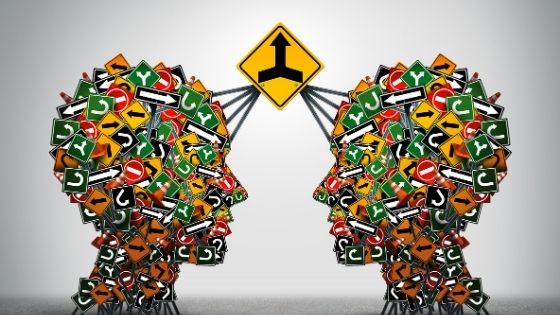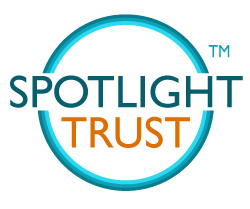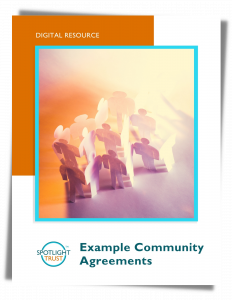
Purpose and Vision is why we do what we do.
Mission is what we do.
Values our how we do what we do. Well, sort of? Maybe? Sometimes? Theoretically?
How Organizational Values Fall Short
Organizational values are intended to drive the attitudes and behaviors of each member of your team, reflecting the collective judgment of what matters to your organization, but they often fall short.
This can happen for a number of reasons:
- Your organizational values were chosen because they looked and sounded good, not because they resonated with your community. They’re little more than hollow words, rather than a solid foundation for your culture.
- Values are often too vague and open to interpretation. When this is the case, they don’t have a shared meaning among your team that translates into specific community attitudes and behaviors consistently practiced in the context of your organization.
- There’s a mismatch between your organization’s alleged values and what it consistently demonstrates as values through actions, decision-making, performance management, and recognition.
- Values appear to apply selectively, depending on the people, the context, or the audience.
- Values are too narrow and centered on cultural fit vs. cultural enrichment. As a result, your organizational values can be a tool that excludes people rather than fostering a sense of belonging for all members of your team.
Organizational values are part of defining how we do what we do, but they’re often not enough. When organizational values fall short, frustration and distrust fill in the gap leading to an unhealthy organizational culture marked with disconnection and disengagement, lost productivity, stagnated innovation and creativity, problems with employee attraction and retention, anxiety, increased red tape, siloization, and more.
Go Beyond Organizational Values with Community Agreements
In our work, we’ve found that teams and organizations build much stronger and resilient cultural foundations when they go beyond values by making and being accountable to co-created community agreements.
Community agreements (we also sometimes call them community commitments) complement organizational values and can make them more meaningful. Community agreements are a concise set of shared and clear commitments about how we are going to show up as leaders and teammates. They’re a tool to activate community identity by thoughtfully shaping group dynamics, patterns of interaction, and collective conversation. They can be co-created for a gathering, project, team, or organization-wide. They involve setting clear expectations, making promises and keeping them—a practical approach that helps build trust at scale.
When we introduce community agreements to a team or organization, we typically recommend co-creating a set of 4-6 agreements. This number can be managed in working memory and is enough to establish sturdy guardrails guiding your team on the pathway to deep cooperation and collaboration while allowing for variance, creativity, innovation, and agility, which help you build a flexible and adaptive culture.
The Value of Community Agreements
Whenever we’ve introduced community agreements in our work with teams and organizations, we found them to be wholeheartedly embraced by all community members and embedded into the team or organization for the long run. The community agreements quickly became a valuable tool to help the members of that team or organization work better together.
Here are some of the benefits that can come from embracing community agreements:
- Co-created community agreements provide an opportunity for all members of a community to contribute to defining an inclusive culture that is lived day in and day out. A thoughtful co-creation process provides opportunity for everyone to have a say and feel seen and heard.
- Community agreements provide a shared understanding and language around how we do what we do as a team and organization. This facilitates communication, connection, cooperation, and collaboration especially with multidisciplinary teams and when working across departments.
- All members of a community have agreed to the community agreements and are aligned with clear expectations, making it much easier for community members to hold themselves and others accountable for their behavior.
- Community agreements are living and meant to be assessed on a regular basis and adapted based on learnings. They can also be used on a micro (e.g meeting, project, or event), meso (e.g. team or collaboration), or macro (e.g organization or community) level.
- Community agreements help overcome barriers that might be introduced by the conventions of etiquette—unwritten sets of rules and customs that may not be universally known and accepted by your community, and hence can exclude and impede a sense of belonging.
- Making and keeping commitments is an effective way to build trust—both with yourself and others—and that is at the core of honoring community agreements.
Our Tips to Help You Introduce Community Agreements
If community agreements seem like a tool you want to experiment with, here are some tips to help get you started:
1. Start small and learn.
If you and your team are new to this tool, give yourself a chance to pilot it on a small scale and learn from the experience. Instead of starting by rolling out community agreements across your organization, consider testing them out in the context of a recurring meeting or a small project. You can iterate and scale from there.
2. Co-create.
One of the key aspects of community agreements is that they’re co-created. This helps all members of the community to feel a sense of ownership of the agreements and to see themselves in them. While it can be tempting to present a ready-made set of agreements, take the time to slow down and get input from all parties being asked to agree to the agreements.
3. You don’t have to start with a blank canvas.
While co-creating is crucial, this doesn’t mean your community has to start with a blank canvas. The sense of infinity can feel overwhelming. You may consider approaching the co-creation conversation with a handful of agreements at the ready for consideration and to serve as examples. Community members can then choose to accept, revise, or discard these, plus contribute their own.
If you’re looking for examples of community agreements, feel free to check out some of our go-to agreements that we often introduce with clients to help kick-off the co-creation process. We’ve assembled these in a Google Doc so you can easily make a copy for yourself and collaborate with your team to make them your own.
4. Make your agreements memorable and meaningful.
Community agreements are meant to be useful, so help ensure they are by design. As we mentioned earlier, we recommend no more than 4-6 agreements in a set so they can be held in working memory. Moreover, we find including a short description of each agreement in the form of a short saying, motto, or adage (even if it feels a bit campy) can help them stick (you’ll see this in our example agreements).
And use reminders! Be sure to review agreements together as a community on a regular basis and saturate your environment with them, whether that’s reminder notes that can be stuck next to a screen, nudging community members to pick a specific agreement to focus on for a given time, printing the short descriptions on corporate swag like pens, notepads, or Zoom backgrounds, or some other creative way that makes sense in your context.
5. Give people a chance to understand and internalize the commitments they are making.
Once you’ve landed on a co-created set of 4-6 community agreements, it can be tempting to charge ahead with the work at hand, but it’s important to take pause and make space. Before asking community members to commit to the community agreements, give them an opportunity to reflect on them and the commitment they are making. It’s important that community members choose to make this agreement for it to be meaningful to themselves and their community.
6. Ask for help.
Depending on the dynamics of your team, it can feel like a heavy lift to introduce community agreements. If you’d like to explore how you might introduce this tool, but you’re not sure how, ask for help, whether that’s from your team members or leadership, or enlisting external expertise like us to coach or guide you through the process so you can build your skills and capacity in this area for the long term.
Get Started Today with Community Agreements
Co-created community agreements can be a powerful tool to help you and your team build trust and strengthen your team and organizational culture.
Remember, while it might be tempting to try and create a perfect set of community agreements, don’t let perfection be the barrier that keeps you from trying out this powerful tool and build a much stronger and resilient cultural foundation with and for your team and organization. Get started co-creating your community agreements today. Your team and organization will be better for it!


